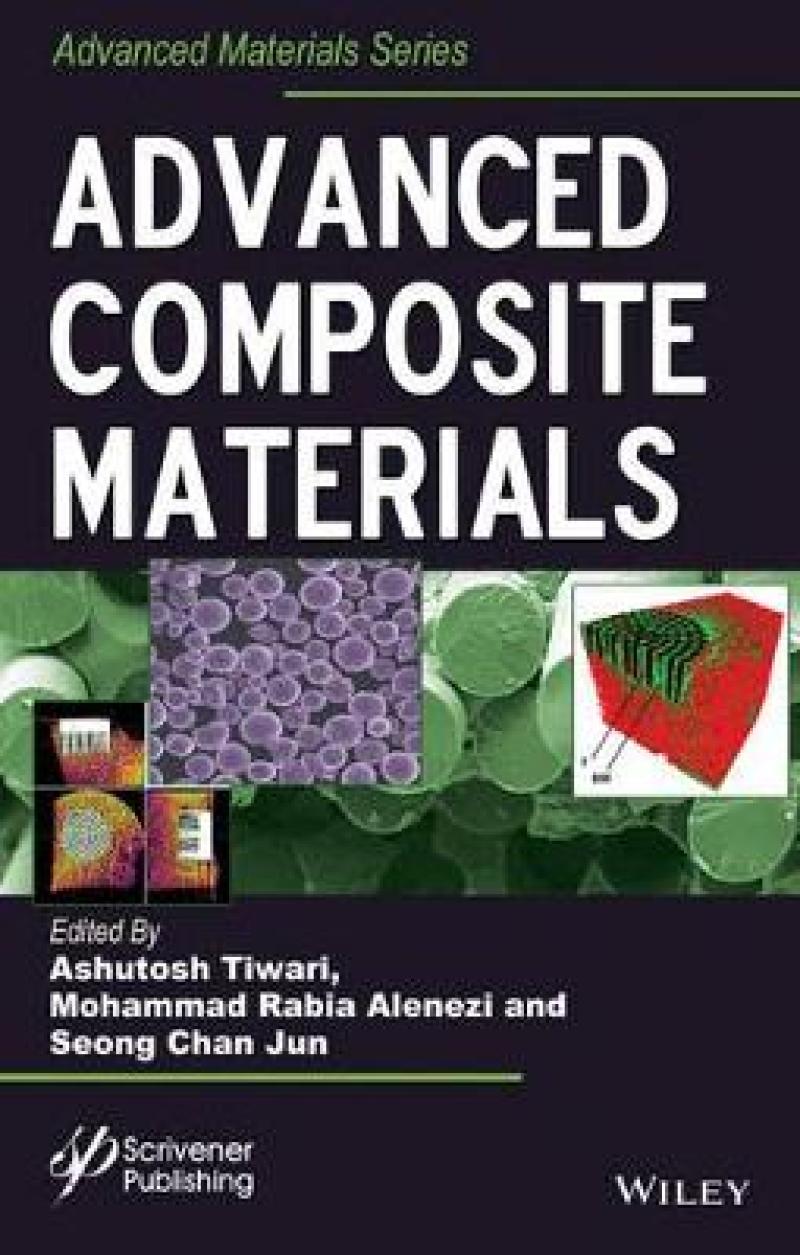Composites materials is basically the combining of unique properties of materials to have synergistic effects. A combination of materials is needed to adapt to certain properties for any application area. There is an everlasting desire to make composite materials stronger, lighter or more durable than traditional materials. Carbon materials are known to be attractive in composites because of their combination of chemical and physical properties. In the recent years, development of new composites has been influenced by precision green approaches that restrict hazardous substances and waste created during production. This book ranges from the fundamental principles underpinning the fabrication of different composite materials to their devices, for example, applications in energy harvesting, memory devices, electrochemical biosensing and other advanced composite-based biomedical applications.
This book provides a compilation of innovative fabrication strategies and utilization methodologies which are frequently adopted in the advanced composite materials community with respect to developing appropriate composites to efficiently utilize macro and nanoscale features. The key topics are:
- Pioneer composite materials for printed electronics
- Current-limiting defects in superconductors
- High-tech ceramics materials
- Carbon nanomaterials for electrochemical biosensing
- Nanostructured ceramics and bioceramics for bone cancer
- Importance of biomaterials for bone regeneration
- Tuning hydroxyapatite particles
- Carbon nanotubes reinforced bioceramic composite
- Biomimetic prototype interface
Preface xv
1 Composite Materials for Application in Printed Electronics 1
Kamil Janeczek
1.1 Introduction 1
1.2 Filler Materials 5
1.3 Conductive Polymers 9
1.4 Preparation of Electronics Materials for Printing 10
1.5 Overview of Application Fields 13
1.6 Conclusions 30
References 31
2 Study of Current-limiting Defects in Superconductors Using Low-temperature Scanning Laser Microscopy 45
Pei Li and Dmytro Abraimov
2.1 Introduction 46
2.2 Introduction of Low-temperature Scanning Laser Microscopy and Its Application in Defect Studies in Superconductors 50
2.3 Case Studies of Using LTSLM to Study Defects in Superconductors 64
2.4 Conclusions 85
Reference 86
3 Innovative High-tech Ceramics Materials 93
Hüsnügül Yılmaz Atay
3.1 Introduction 93
3.2 Ceramic Structure 100
3.3 Raw Materials 108
3.4 Processing of Ceramics 111
3.5 Properties 118
3.6 Some Important Advanced Ceramics 121
3.7 Conclusions 149
References 150
4 Carbon Nanomaterials-based Enzymatic Electrochemical Sensing 155
Rooma Devi, Lipsy Chopra, C.R. Suri, D.K. Sahoo and C.S. Pundir
4.1 Introduction 155
4.2 Carbon Nanomaterials 157
4.3 Carbon Nanotubes Paste Electrodes 165
4.4 Carbon Nanotube-based Electrodes with Immobilized Enzymes 166
4.5 Fullerene-modified Electrode 173
4.6 Carbon Nanoonion (CNO)-modified Electrode 174
4.7 Carbon Nanodiamond-modified Electrode 174
4.8 Carbon Nanohorns-modified Electrode 174
4.9 Carbon Nanofibers-based Electrode 175
4.10 Carbon Nanodot-based Electrode 176
4.11 Electrochemical Biosensor 177
4.12 Conclusions 192
4.13 Future Developments 194
Acknowledgment 195
References 195
5 Nanostructured Ceramics and Bioceramics for Bone Cancer Treatment 209
B. Palazzo, S. Scialla, F. Scalera, N. Margiotta and F. Gervaso1
5.1 Overview 210
5.2 General Concepts onto Bone Cancer and Bone Metastases 210
5.3 Intrinsically Anticancer Nanoceramics 224
5.4 Imprinting Anticancer Properties to Bioceramics by Chemotherapeutic Functionalization 238
5.5 Composite Magnetic Bioceramics 249
5.6 Conclusions and Outlook 254
Acknowledgements 256
References 256
6 Therapeutic Strategies for Bone Regeneration: The Importance of Biomaterials Testing in Adequate
Animal Models 275
P.O. Pinto, L.M. Atayde, J.M. Campos, A.R. Caseiro, T. Pereira, C. Mendonça, J.D. Santos and A.C. Maurício
6.1 Introduction 276
6.2 Animal Models Used for In Vivo Testing Bone of Grafting Products 292
6.3 Histomorphometric Analyses 298
6.4 Histologic Analysis 301
6.5 Conclusions 303
Acknowledgments 306
References 306
7 Tuning Hydroxyapatite Particles’ Characteristics for Solid Freeform Fabrication of Bone Scaffolds 321
F. Miculescu, A. Maidaniuc, G.E. Stan, M. Miculescu, S.I. Voicu, A. Cîmpean, V. Mitran and D. Batalu
7.1 Introduction 322
7.2 Powder-based Solid Freeform Fabrication of Naturally Derived Ceramic Components 326
7.3 Tuning of Naturally Derived Calcium Phosphates for Solid Freeform Fabrication 362
7.4 Conclusions 383
Acknowledgments 384
References 384
8 Carbon Nanotubes-reinforced Bioceramic Composite: An Advanced Coating Material for Orthopedic Applications 399
D. Gopi, E. Shinyjoy, L. Kavitha and D. Rajeswari
8.1 Introduction 400
8.2 Materials and Method 407
8.3 Results and Discussion 417
8.4 Conclusion 444
Acknowledgments 445
References 445
Index 453
Produktdetaljer
Biografisk notat
Ashutosh Tiwari is Secretary General, International Association of Advanced Materials; Chairman and Managing Director of Tekidag AB (Innotech); Associate Professor and Group Leader, Smart Materials and Biodevices at the world premier Biosensors and Bioelectronics Centre, IFM-Linköping University; Editor-in-Chief, Advanced Materials Letters; a materials chemist and docent in the Applied Physics with the specialization of Biosensors and Bioelectronics from Linköping University, Sweden. He has more than 100 peer-reviewed primary research publications in the field of materials science and nanotechnology and has edited/authored more than 35 books on advanced materials and technology. He is the founder member and chair of American, Asian, European and Advanced Materials World Congress, Smart Materials and Surfaces, Global & European Graphene Forum, International Conference on Smart Energy Technologies, International Conference on Material Science and Technology and World Technology Forum.
Mohmmad R. Alenezi (PhD, University of Surrey, UK) is the Assistant Deputy Director General for Applied Education and Research at Public Authority for Applied Education and Training in Kuwait. He is also an assistant professor at the department of Electronics Engineering at the college of technological studies. His research is focused on rationally controlled synthesis of metal oxide nanostructures at low temperature and large scale and their uses in the fabrication of different devices for a wide range of applications.
Seong Chan Jun received his Master and Ph.D. degrees from Cornell University and Columbia University respectively after which he joined the Nanoscale Science and Engineering Center (NSEC) at Columbia University. He worked at the Samsung Advanced Institute of Technology (SAIT) in nano-electronics divisions, and since 2008 he has been on the mechanical engineering faculty at Yonsei University, Seoul, Korea. His specialty is electrical and optical nano-materials.
